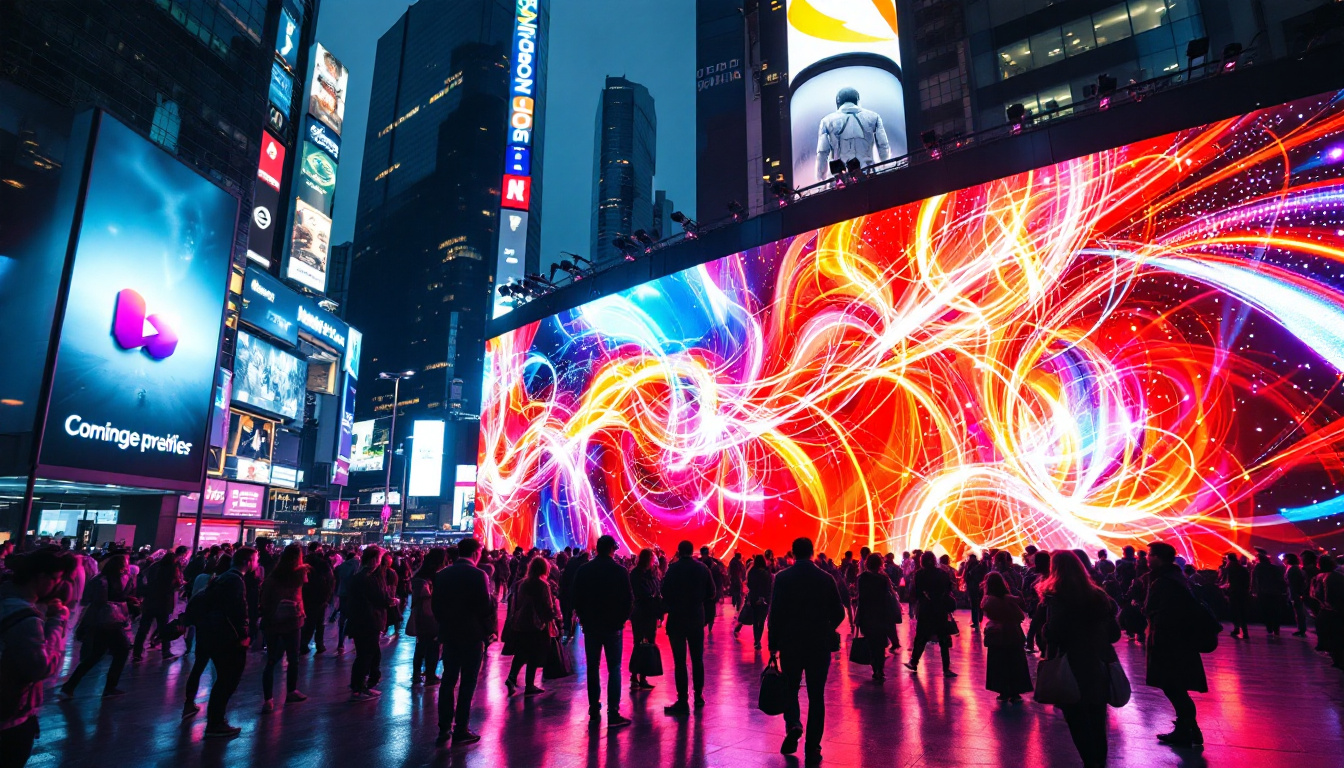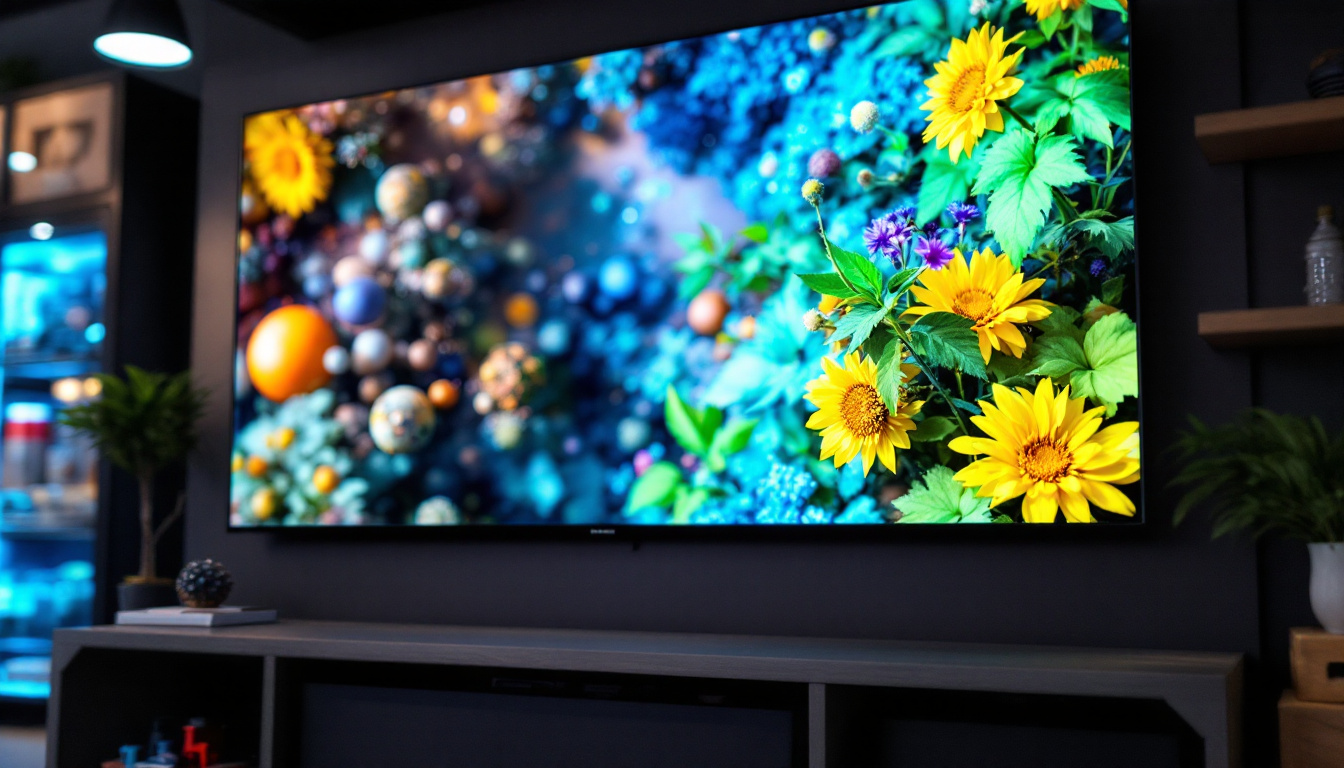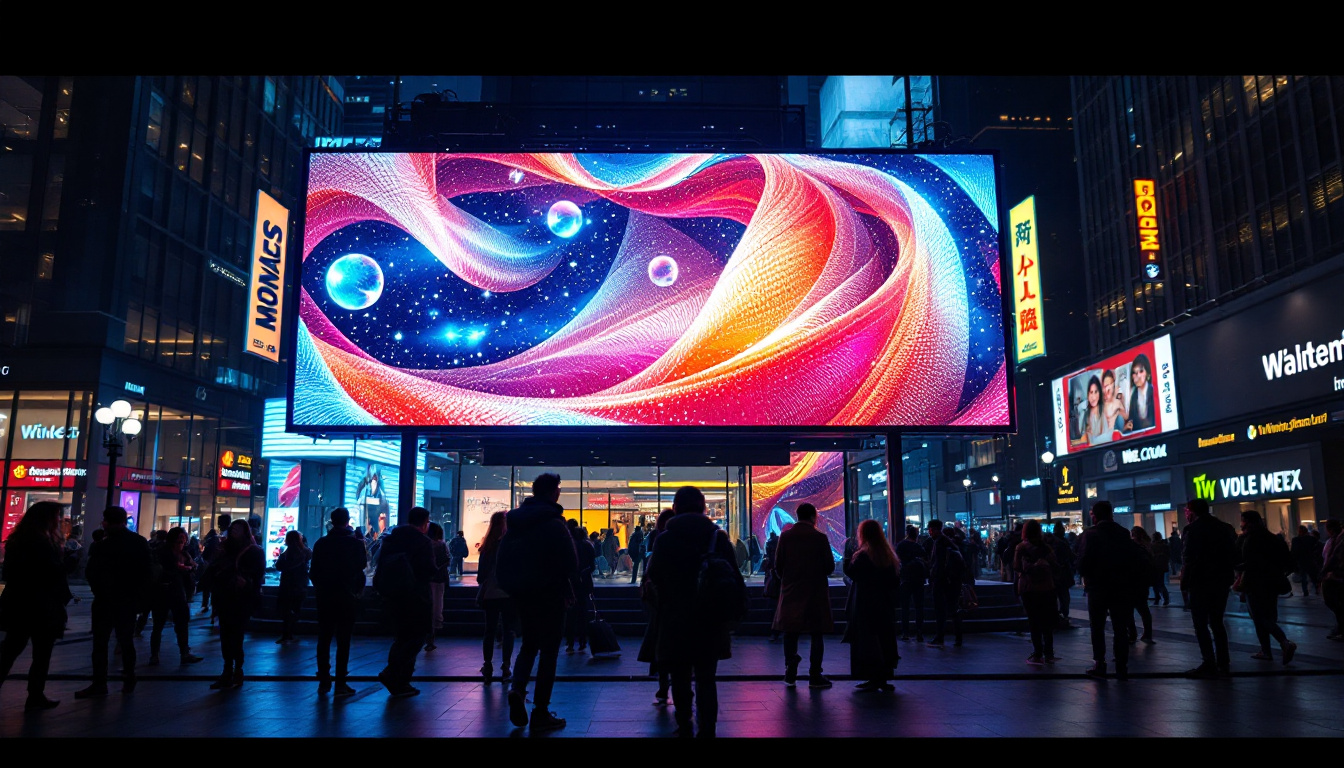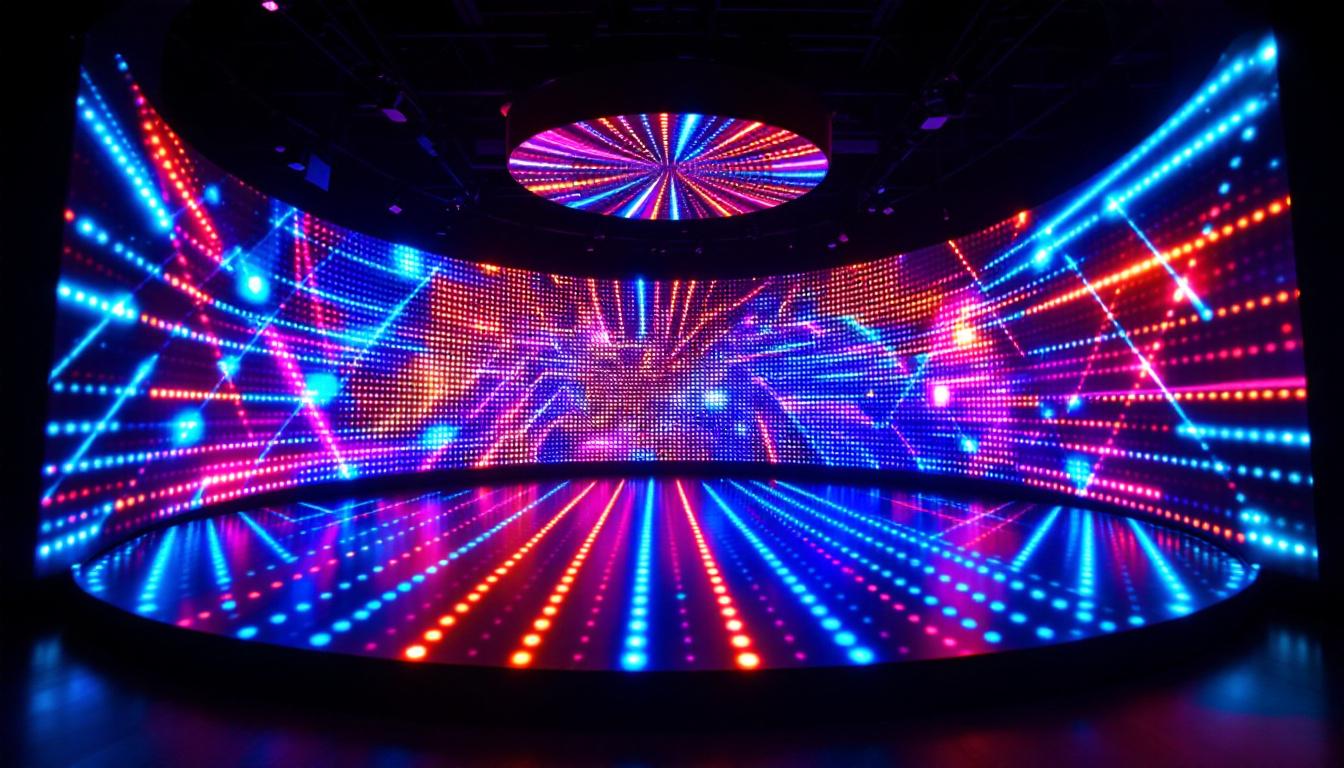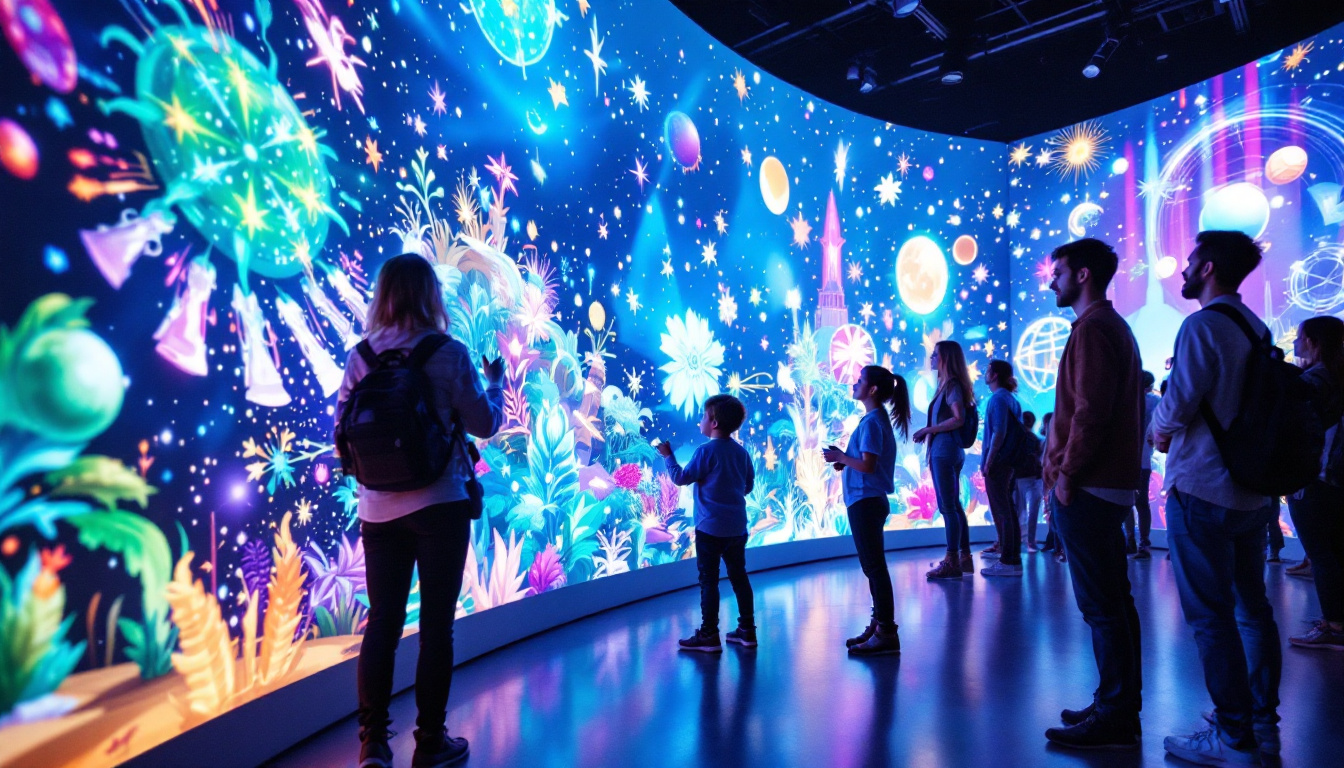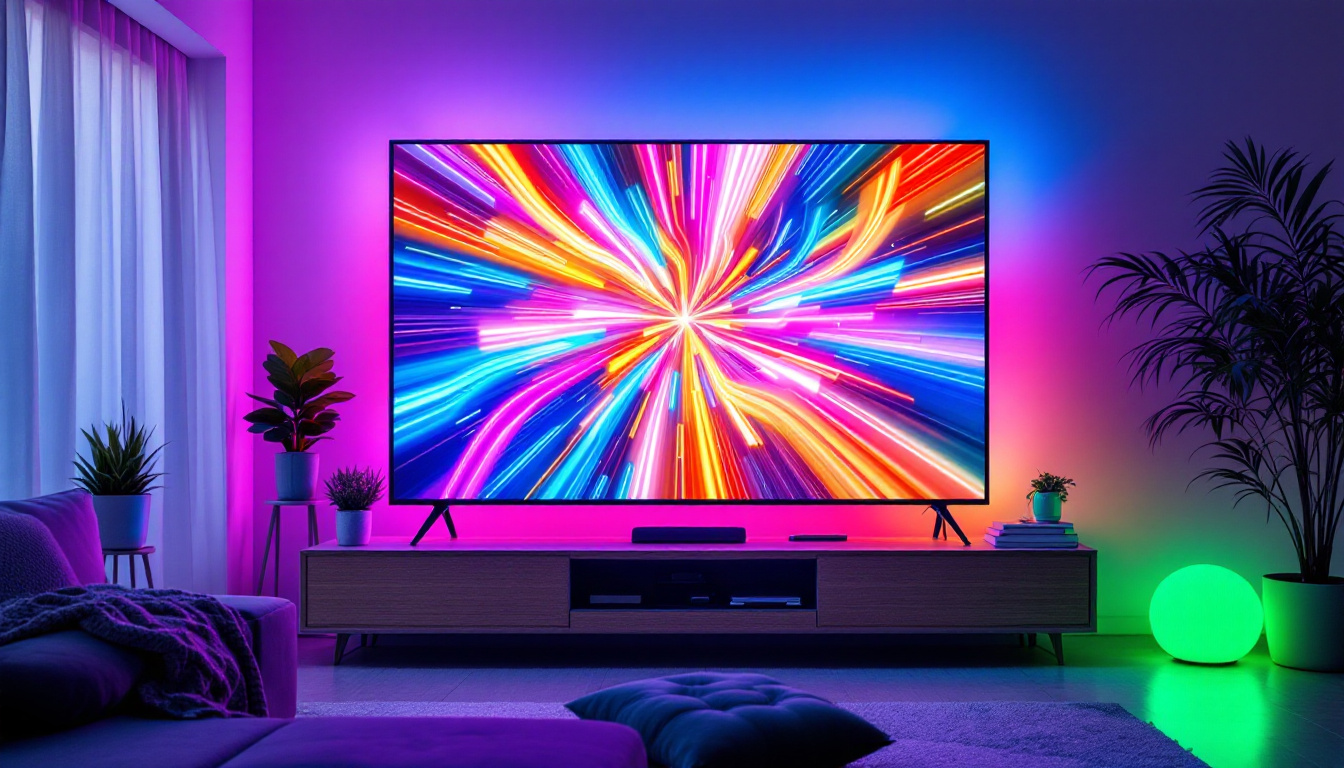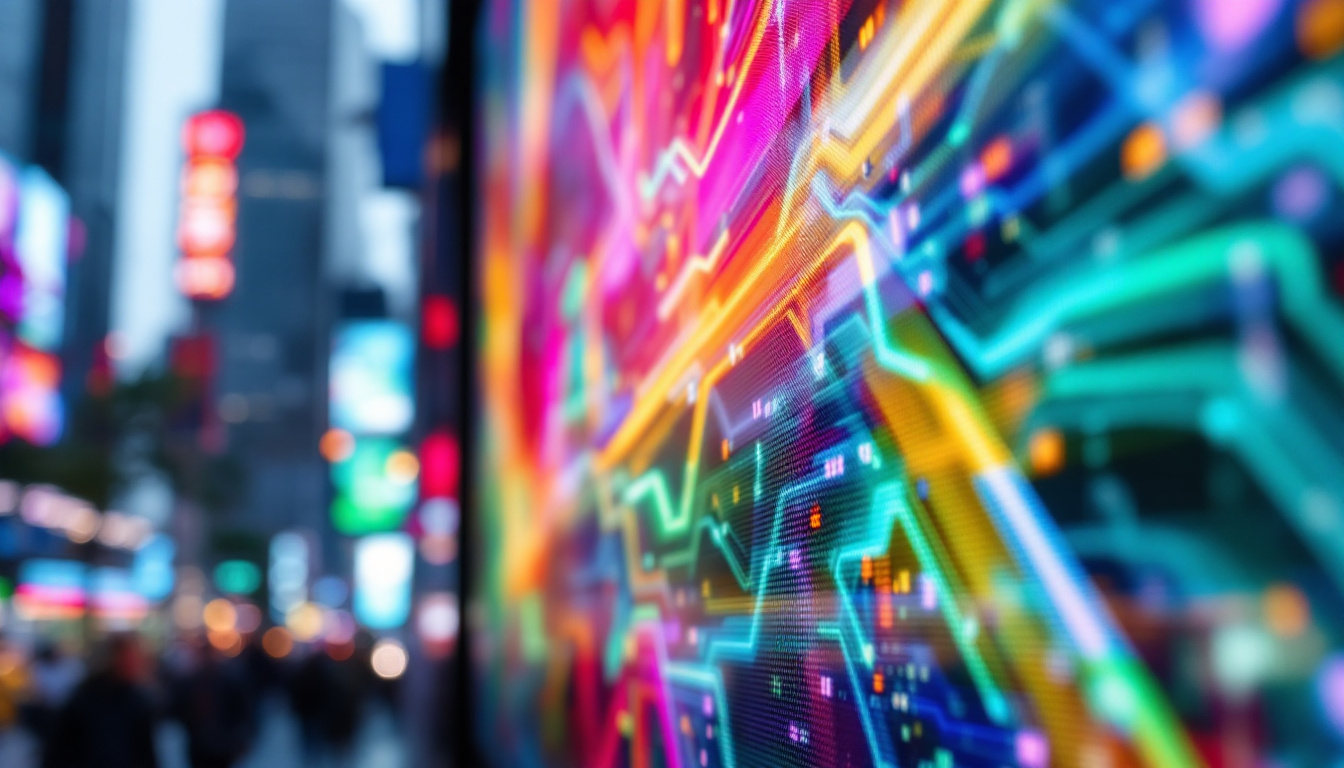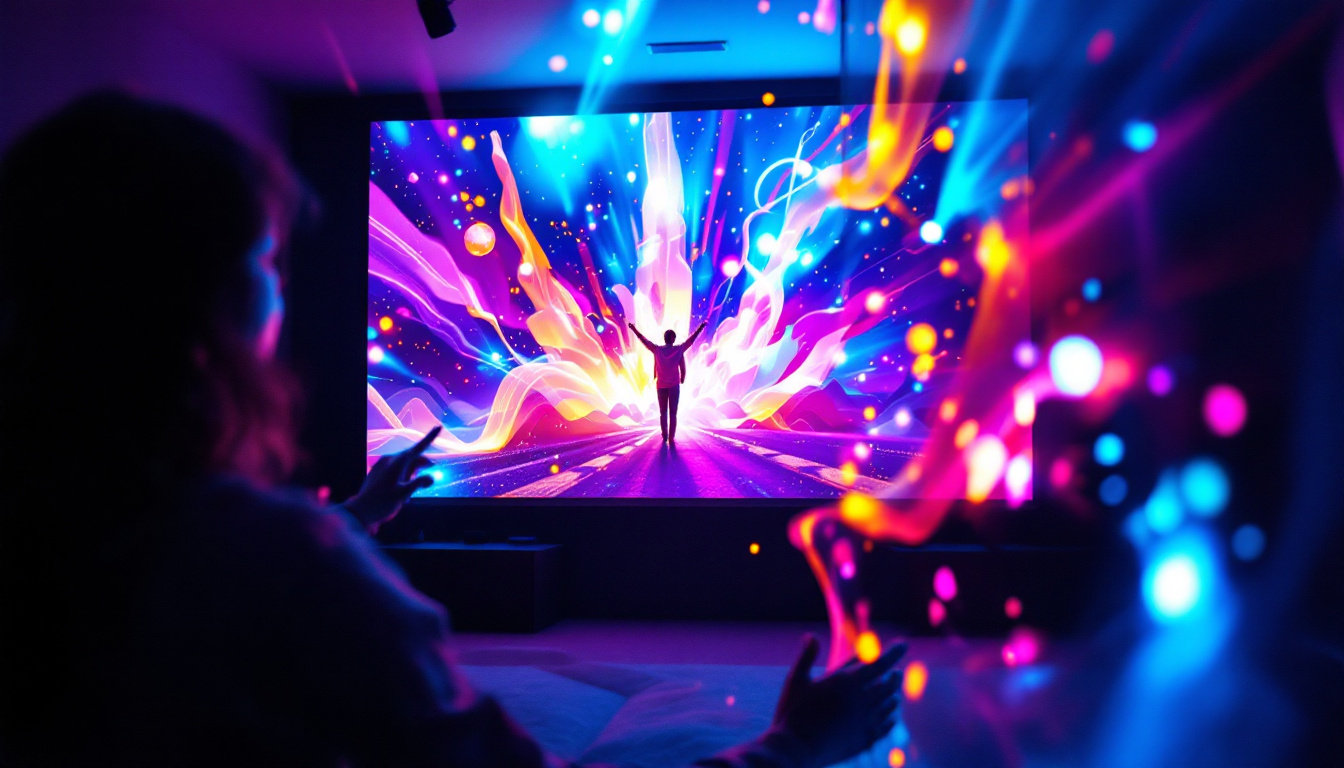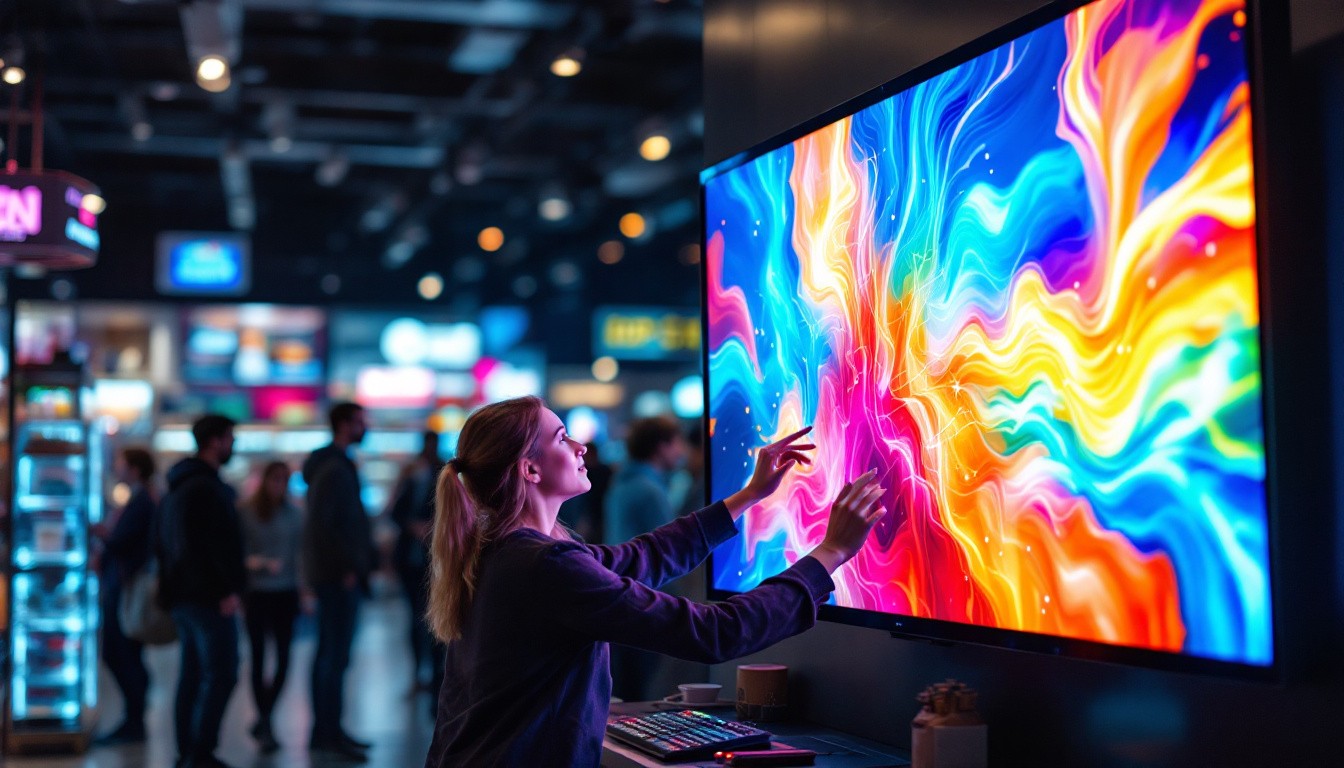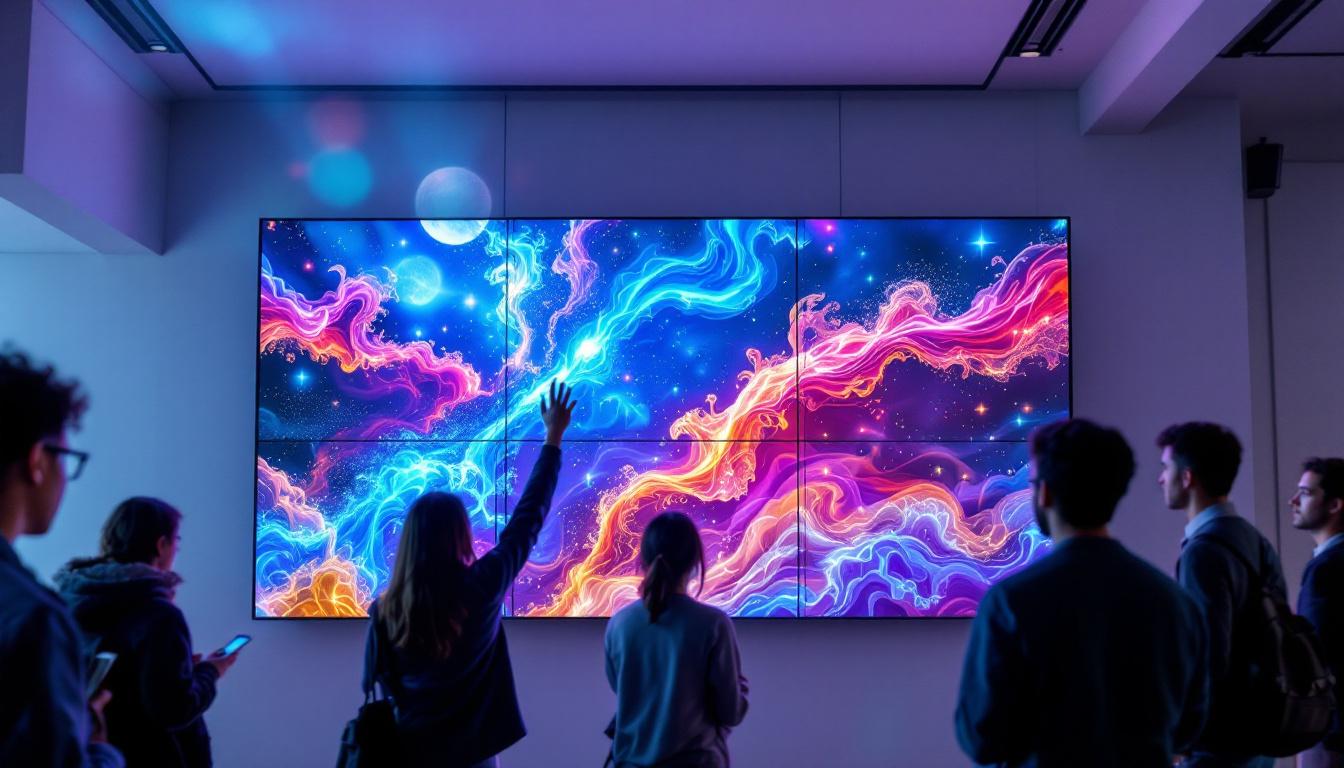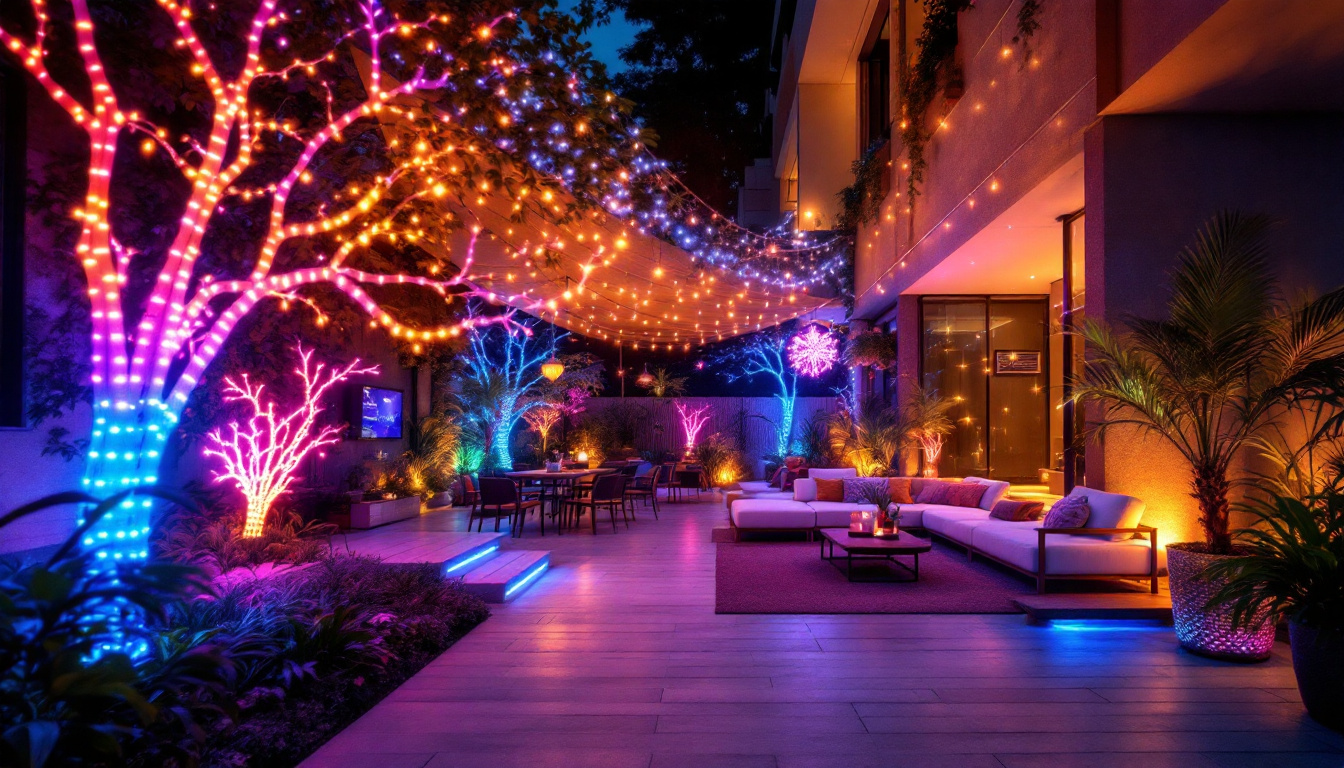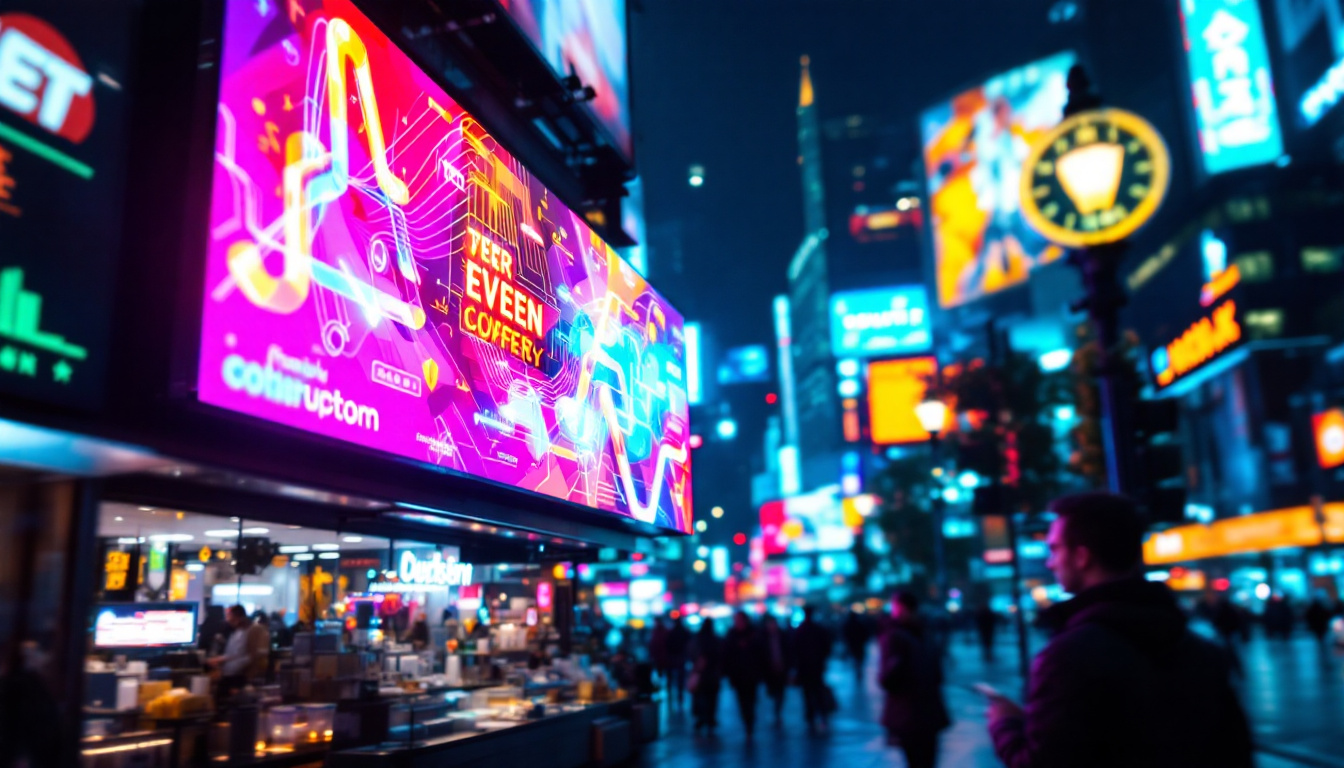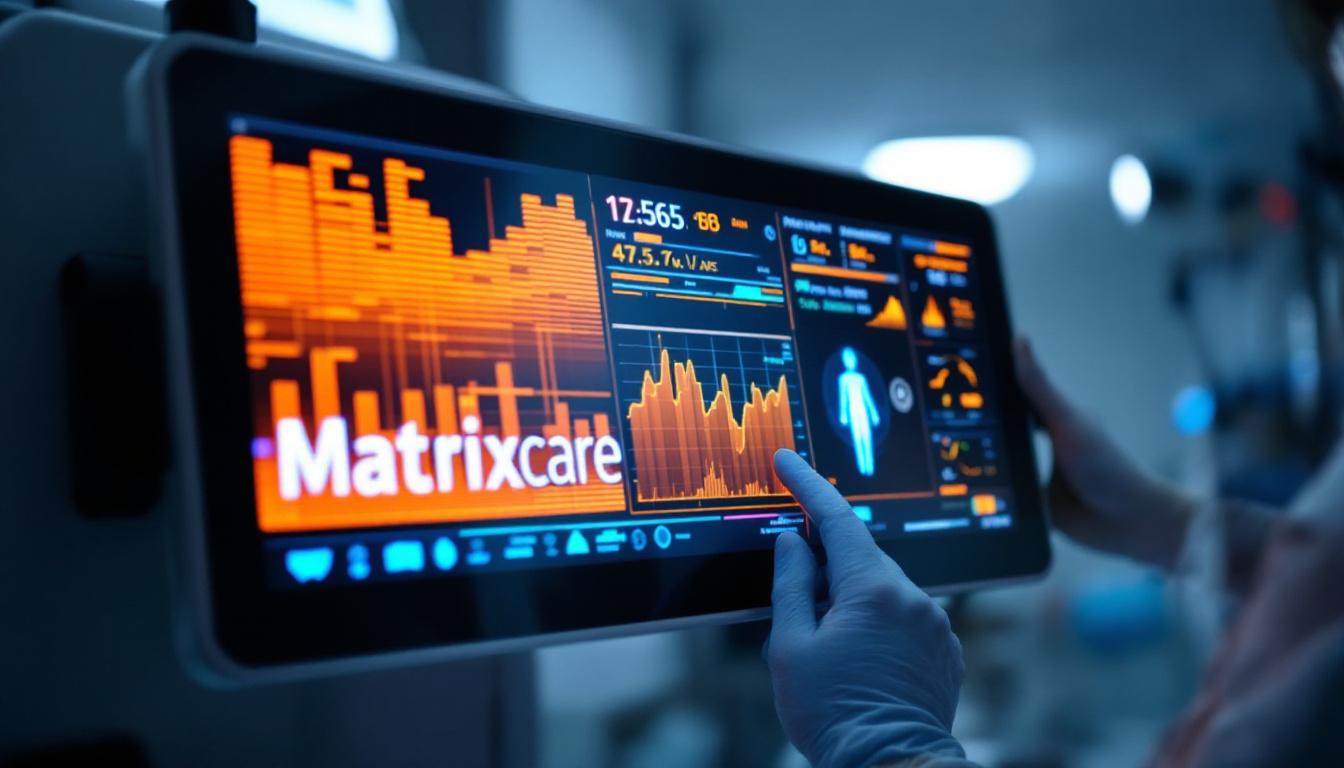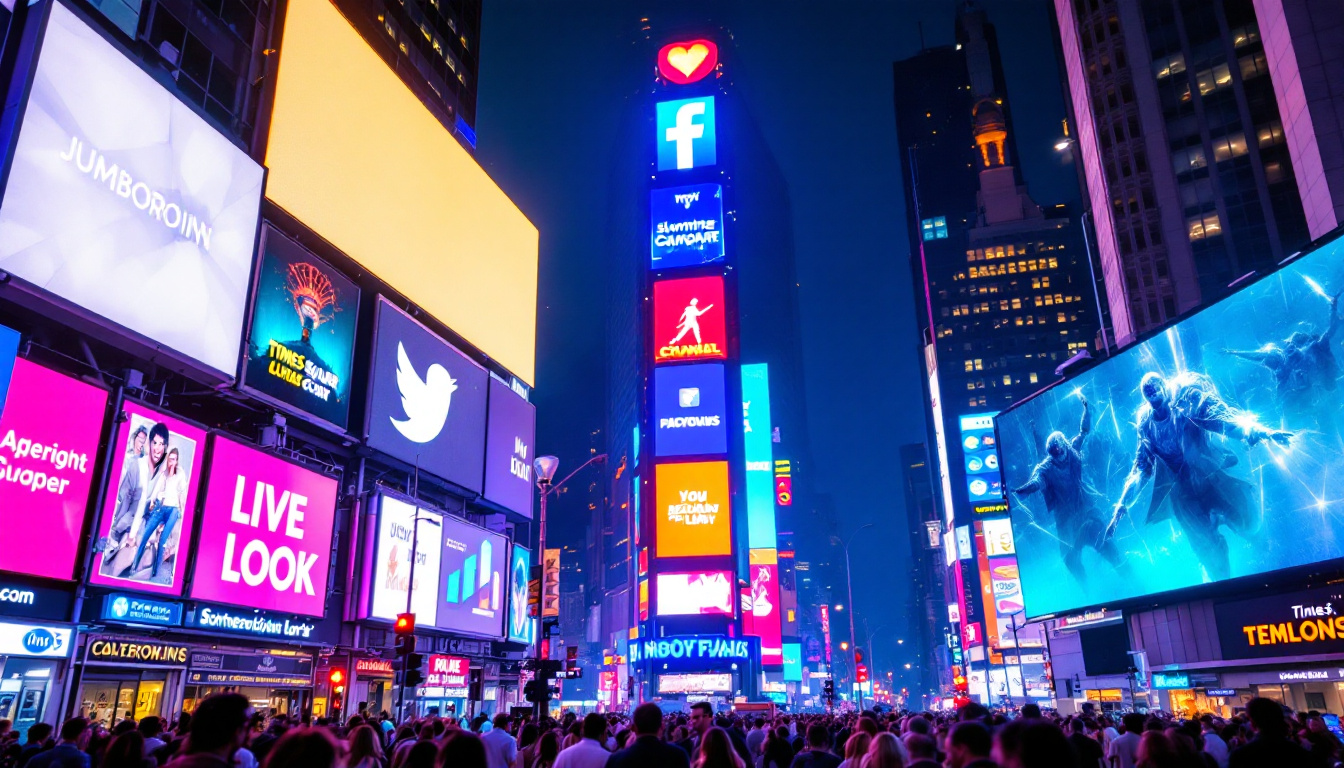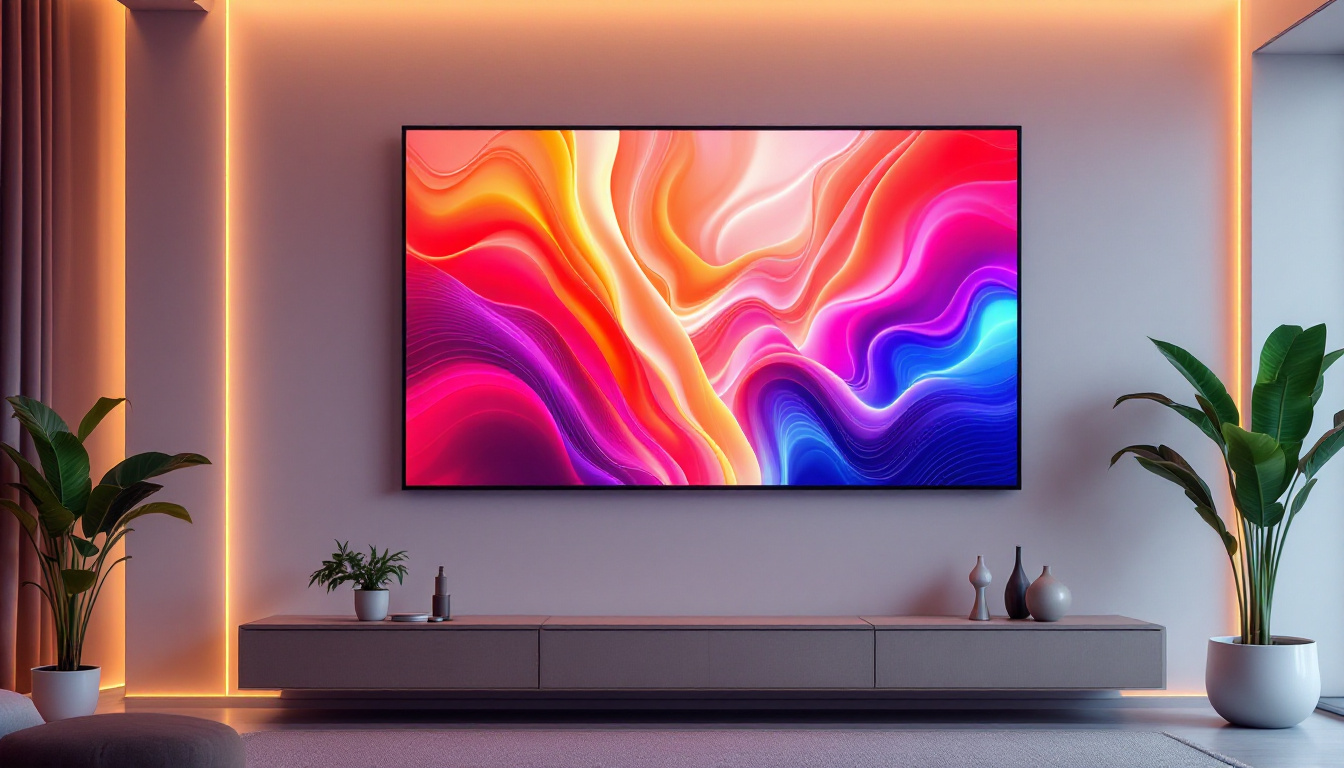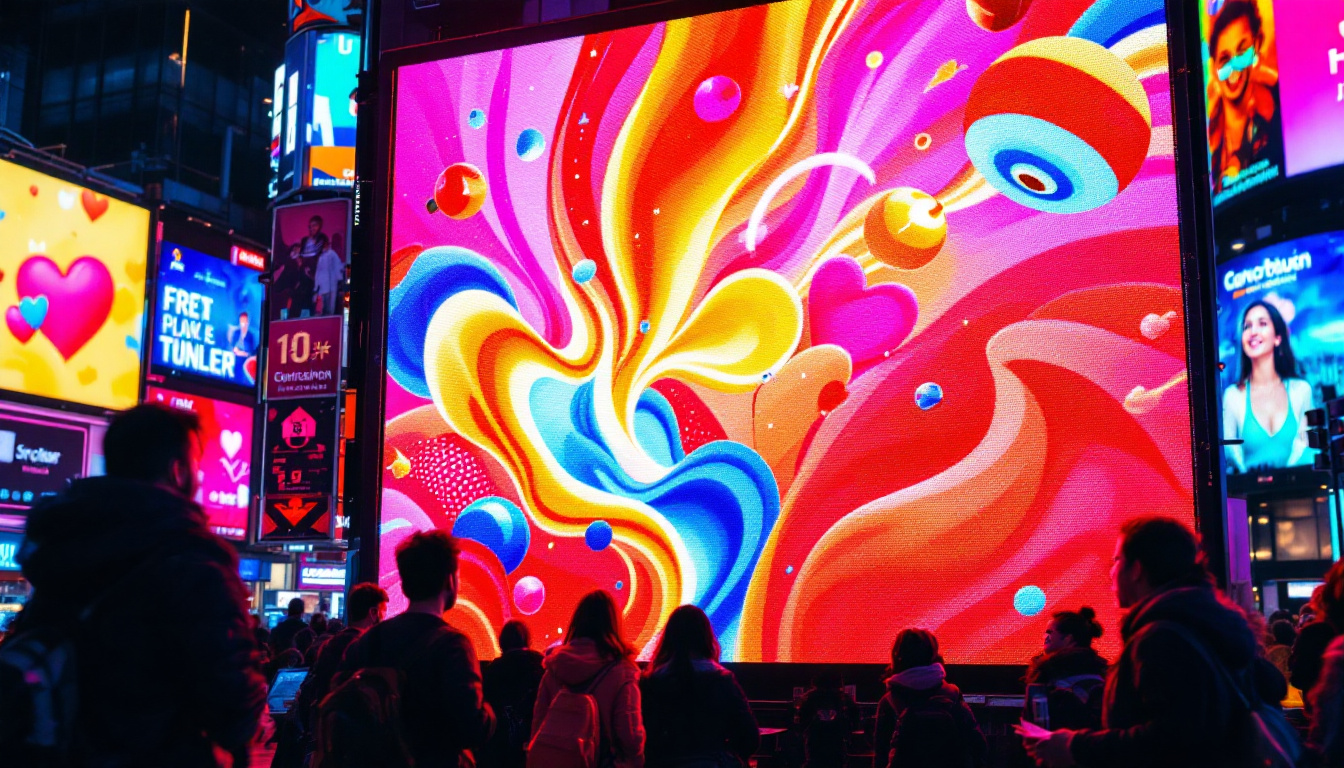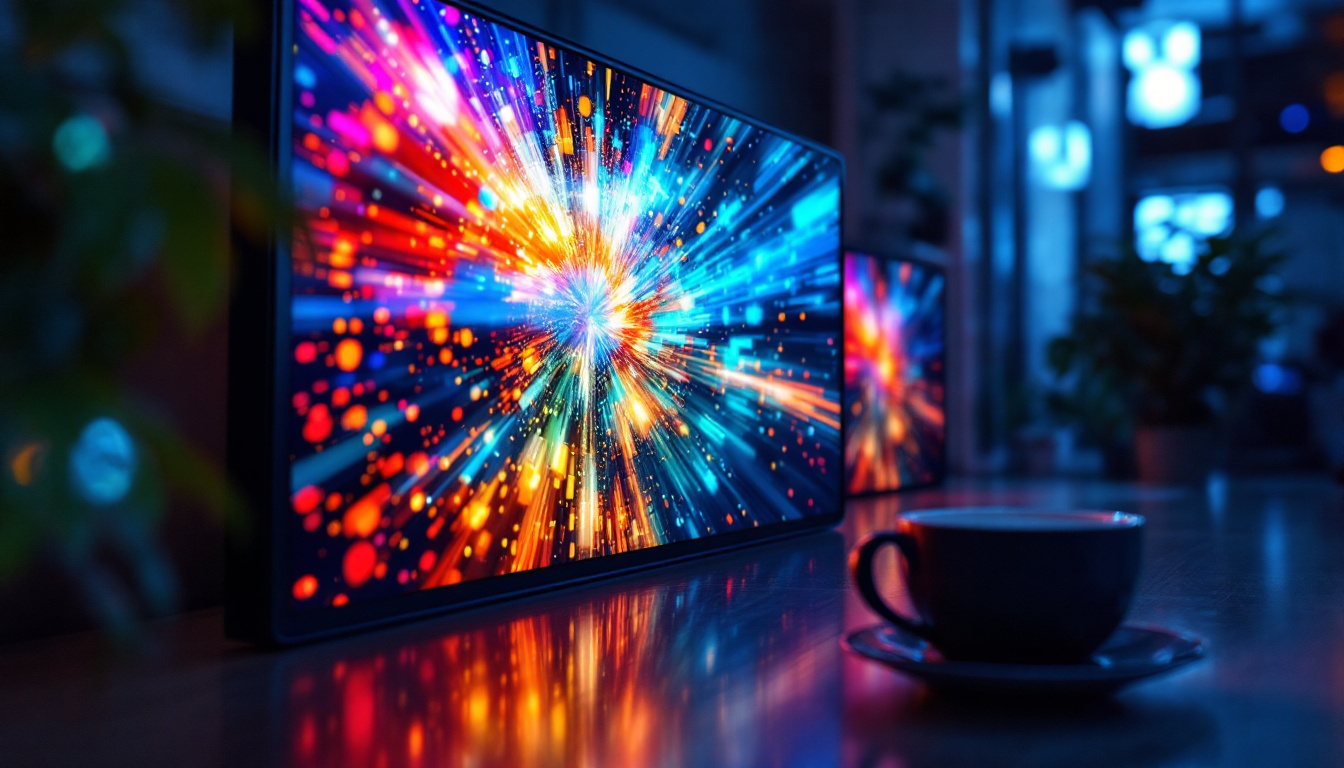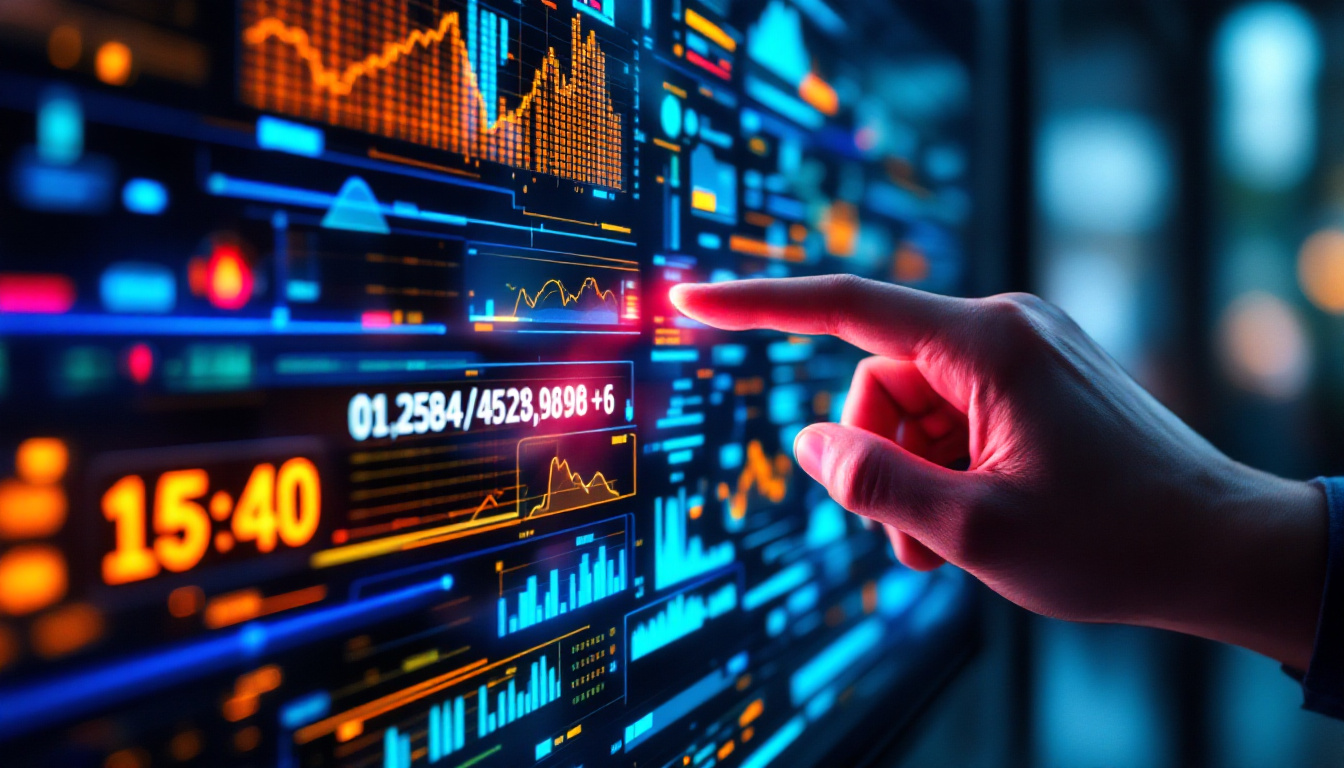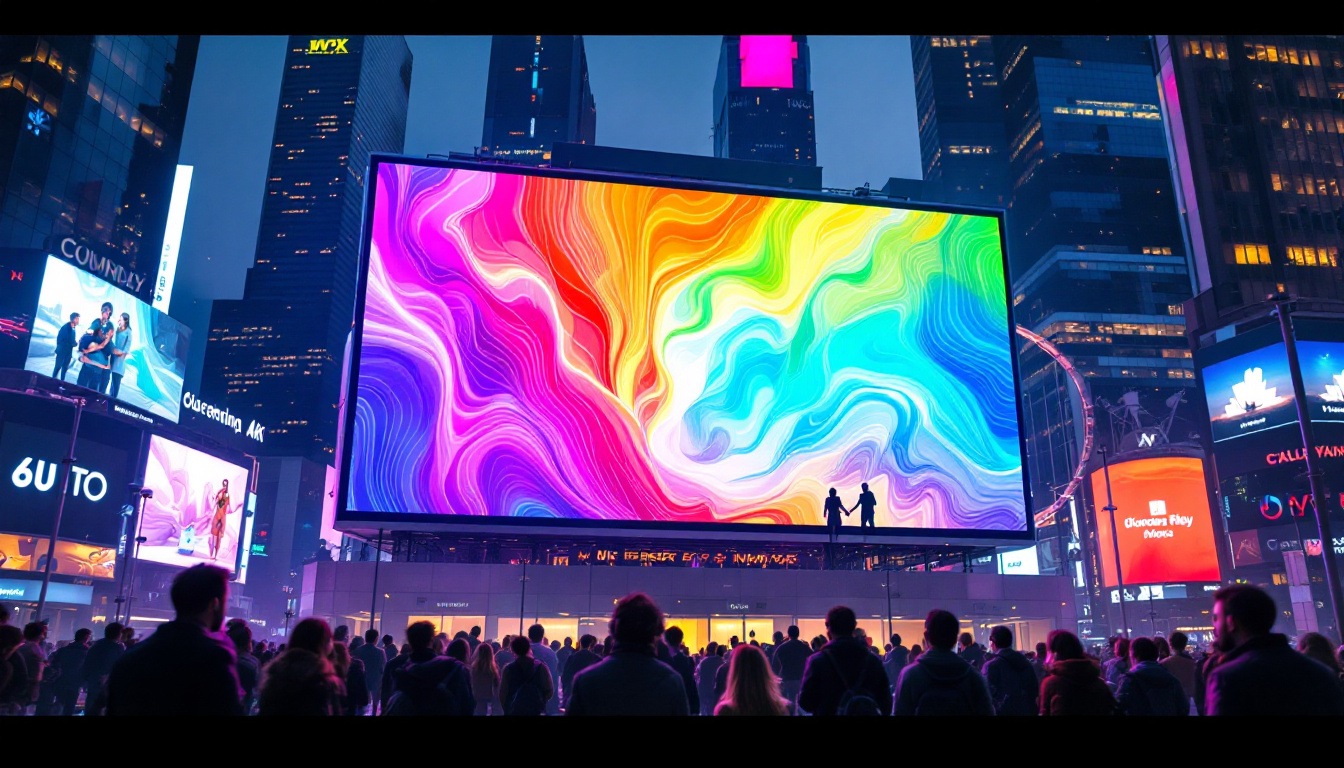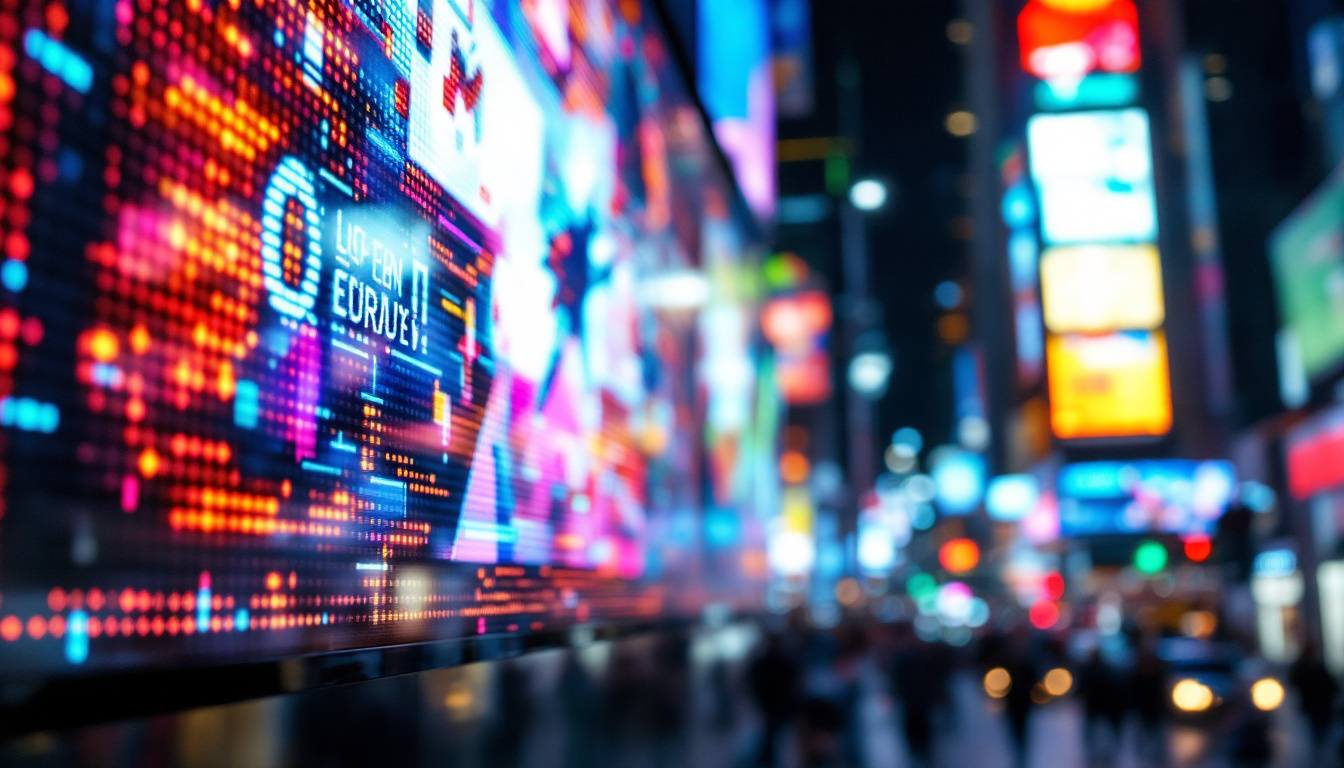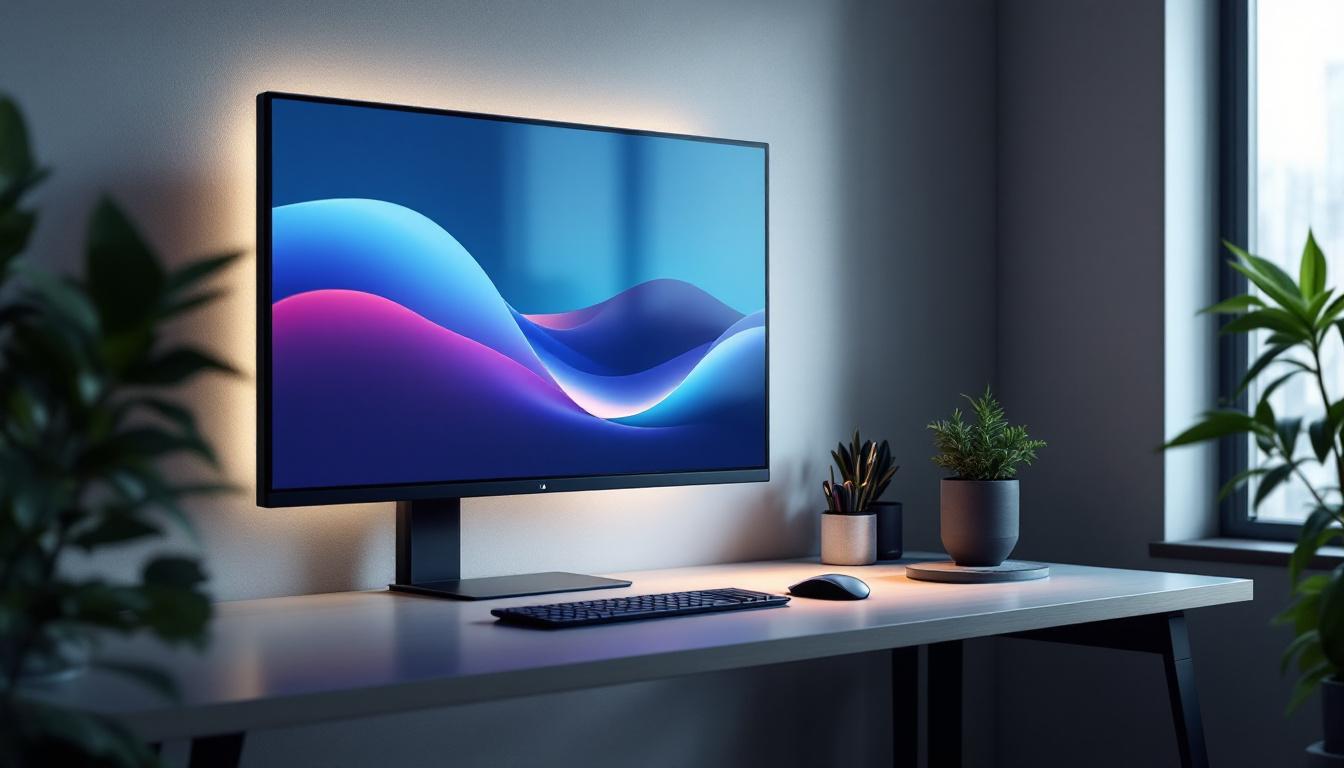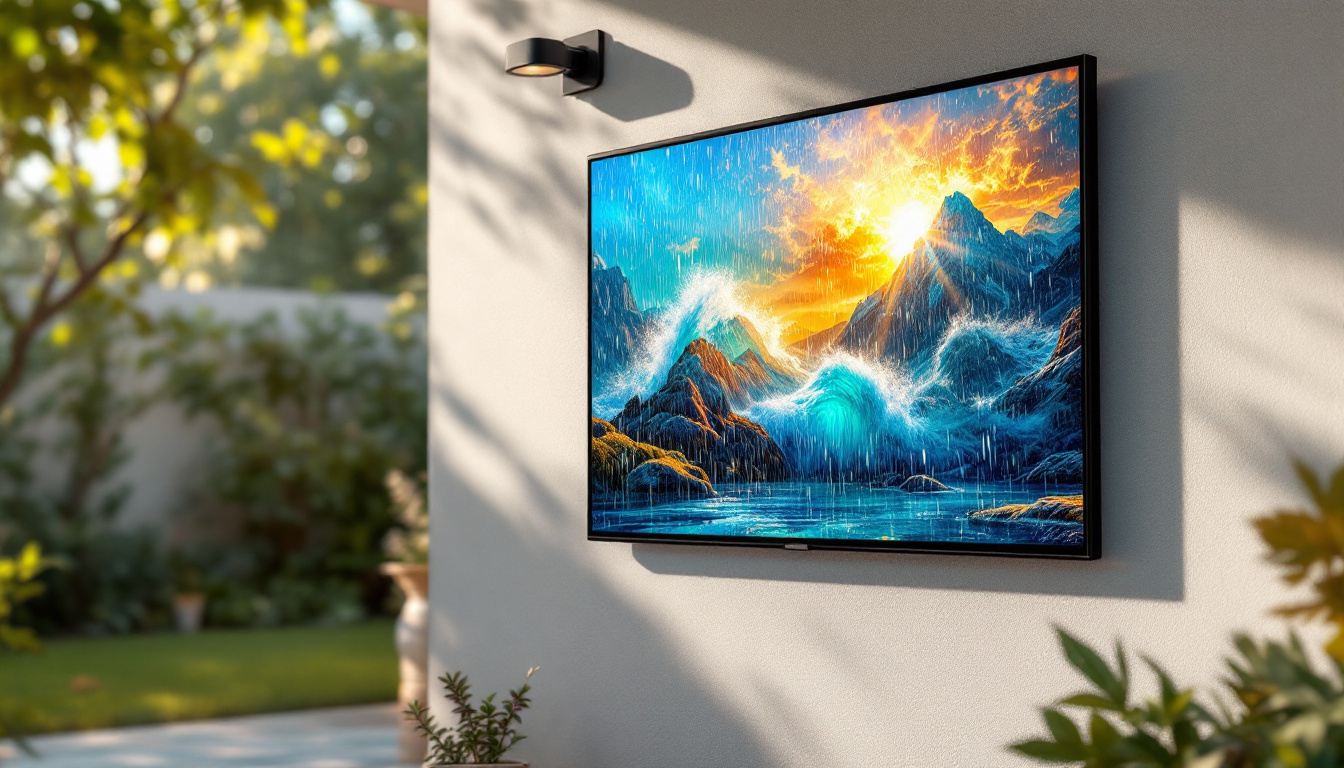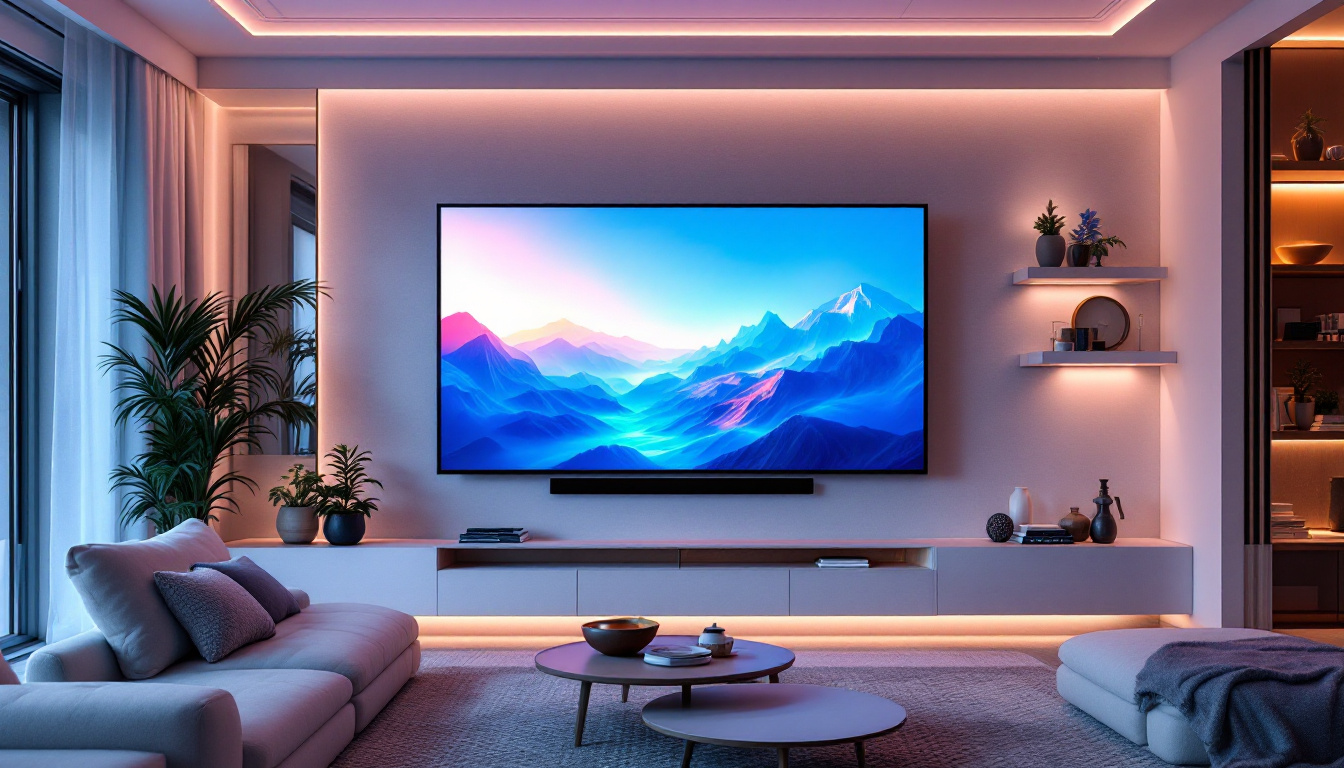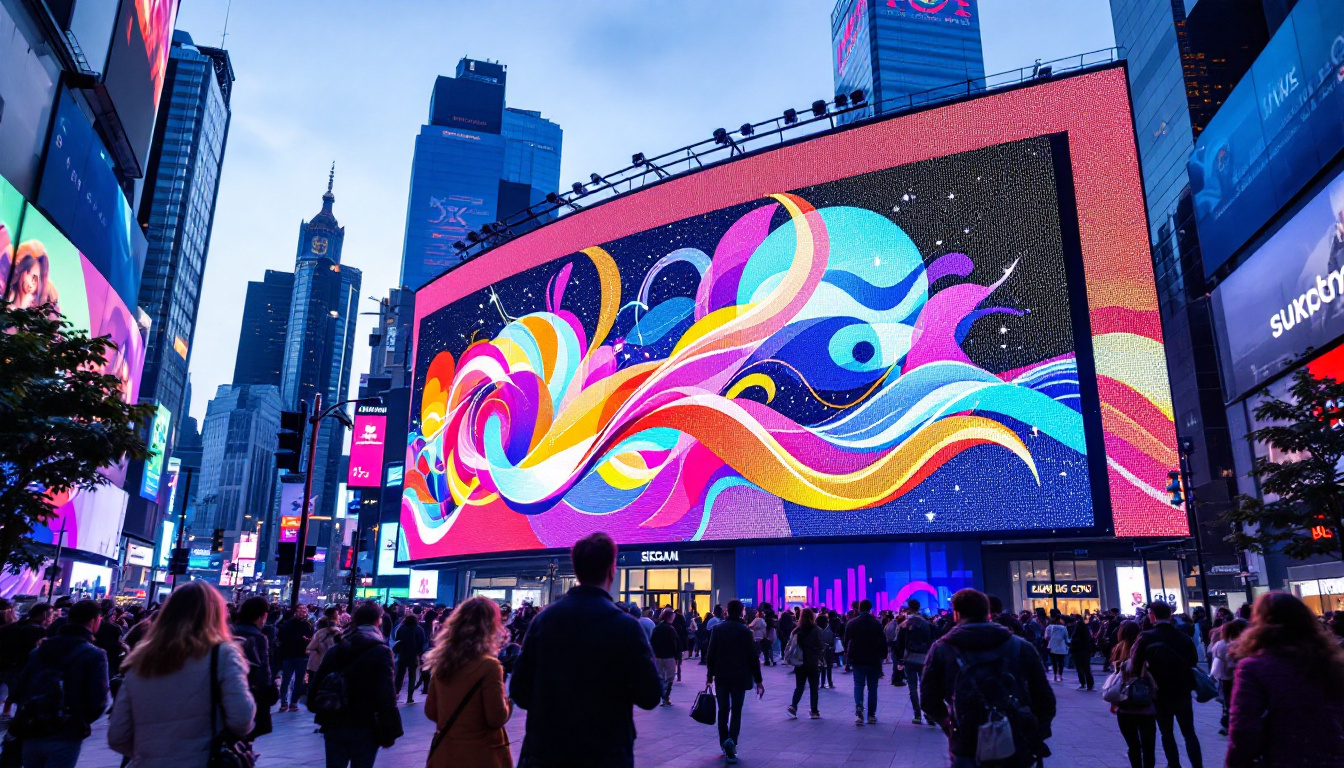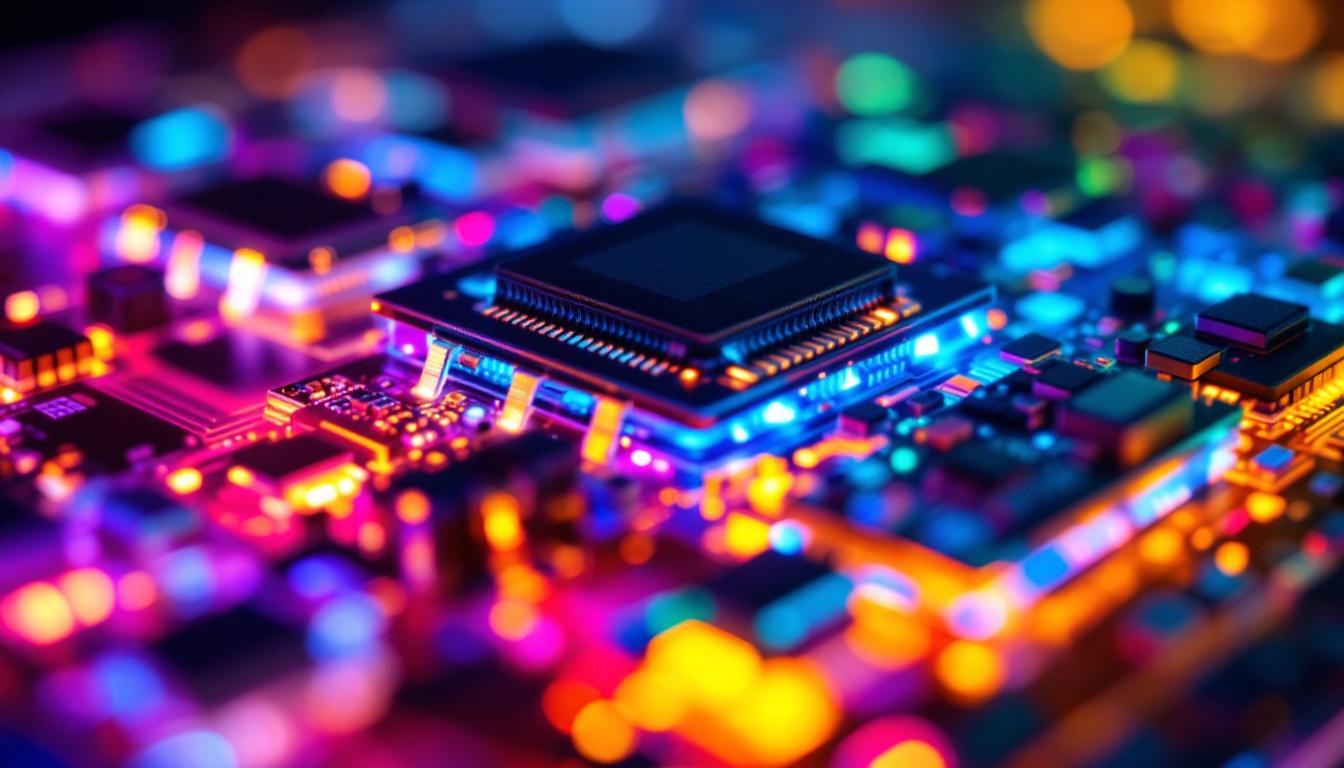In the ever-evolving world of television technology, LED displays have emerged as a dominant force, captivating audiences with their vibrant colors and exceptional clarity. This article delves into the intricacies of LED displays, exploring their functionality, advantages, and the future they promise in the realm of visual entertainment.
Understanding LED Technology
LED, or Light Emitting Diode, technology has revolutionized the way images are displayed on screens. Unlike traditional LCD screens that rely on backlighting, LED displays utilize diodes that emit light when an electric current passes through them. This fundamental difference allows for a more efficient and dynamic display of images. The impact of this technology extends beyond just consumer electronics; it has also transformed industries such as advertising, automotive, and even architecture, where vibrant displays are crucial for attracting attention and conveying information effectively.
How LED Displays Work
The core of an LED display lies in its ability to control light at a granular level. Each pixel in an LED screen is made up of multiple diodes, typically red, green, and blue (RGB). By adjusting the brightness of these individual diodes, a wide spectrum of colors can be produced. This pixel-level control results in sharper images and deeper contrasts, enhancing the viewing experience. Furthermore, advancements in technology have led to the development of OLED (Organic LED) displays, which offer even greater flexibility in design and improved color accuracy by using organic compounds that emit light, allowing for thinner screens and more vibrant displays.
Moreover, LED displays can be categorized into two main types: Direct LED and Edge-Lit LED. Direct LED displays have diodes placed directly behind the screen, providing uniform brightness across the entire display. In contrast, Edge-Lit LED displays have diodes positioned along the edges of the screen, which can lead to variations in brightness and contrast. This distinction is crucial for consumers to understand, as it influences the overall performance and suitability of the display for different applications, from gaming to professional graphics work.
Key Features of LED Displays
LED displays come equipped with several features that set them apart from traditional display technologies. One of the most notable is their energy efficiency. LED screens consume significantly less power than their LCD counterparts, making them a more environmentally friendly option. This efficiency not only reduces electricity bills but also contributes to a lower carbon footprint, aligning with global efforts to promote sustainability in technology.
Additionally, LED displays offer a wider viewing angle, allowing viewers to enjoy consistent picture quality from various positions in the room. This feature is particularly beneficial in settings such as home theaters, where seating arrangements can vary widely. The rapid response times of LED technology also minimize motion blur, making these displays ideal for fast-paced content like sports or action films. As a result, they have become the preferred choice for both casual viewers and professional content creators who demand high-quality visuals in their work.
Advantages of LED Displays
The advantages of LED displays extend beyond mere aesthetics. They offer a plethora of benefits that cater to both casual viewers and professional users alike.
Superior Picture Quality
One of the standout features of LED displays is their superior picture quality. The ability to produce deeper blacks and brighter whites enhances the overall contrast ratio, resulting in images that are more lifelike. This quality is particularly evident in dark scenes, where traditional displays often struggle to maintain detail.
Furthermore, the high refresh rates of LED displays contribute to smoother motion handling, making them ideal for watching fast-paced content such as sports or action movies. Viewers can enjoy a seamless experience without the blurring that sometimes occurs with slower display technologies. The color accuracy of LED displays is also noteworthy; they can reproduce a wider color gamut, ensuring that every hue is vibrant and true to life. This makes them particularly appealing for graphic designers and photographers who rely on precise color representation for their work.
Longevity and Durability
LED displays are known for their longevity. With a lifespan that can exceed 50,000 hours, they outlast many other display technologies. This durability not only reduces the need for frequent replacements but also makes LED displays a cost-effective choice in the long run.
In addition to their longevity, LED displays are more resistant to screen burn-in, a common issue with some older technologies. This resilience allows users to enjoy their favorite content without worrying about permanent damage to the screen. Moreover, LED displays are built with robust materials that can withstand various environmental conditions, making them suitable for both indoor and outdoor use. Whether it’s a bustling sports arena or a serene home theater, LED displays maintain their performance, ensuring that viewers receive a consistently high-quality experience regardless of the setting.
Applications of LED Displays
The versatility of LED displays has led to their widespread adoption across various sectors. From home entertainment systems to commercial applications, their impact is undeniable.
Home Entertainment
In the realm of home entertainment, LED displays have become the standard for televisions. Their ability to deliver stunning visuals makes them a popular choice for movie enthusiasts and gamers alike. With the advent of 4K and 8K resolutions, LED technology continues to push the boundaries of picture quality, providing an immersive viewing experience.
Smart LED TVs now come equipped with integrated streaming services, voice control, and smart home compatibility, further enhancing their appeal. This convergence of technology allows users to enjoy a seamless entertainment experience without the need for additional devices. Additionally, many models now feature advanced HDR (High Dynamic Range) capabilities, which enhance contrast and color accuracy, making every scene look more lifelike. This has transformed how viewers appreciate films and shows, as the visual fidelity can significantly elevate storytelling and emotional engagement.
Commercial Use
Beyond the living room, LED displays play a crucial role in commercial settings. From advertising billboards to digital signage in retail environments, their bright and vivid displays attract attention and engage customers effectively. The ability to change content quickly and remotely makes LED displays an invaluable tool for marketers.
Moreover, in corporate settings, LED displays are used for presentations and video conferencing, providing clear visuals that enhance communication. Their adaptability and ease of use make them a preferred choice for businesses looking to make an impact. In addition to traditional uses, LED displays are increasingly being integrated into interactive kiosks, allowing customers to engage with brands in a dynamic way. These displays can provide product information, promotional content, and even facilitate transactions, creating a more interactive shopping experience that resonates with tech-savvy consumers. Furthermore, the energy efficiency of LED technology contributes to sustainability efforts, making them a responsible choice for companies aiming to reduce their carbon footprint while still delivering high-quality visual content.
The Future of LED Displays
As technology continues to advance, the future of LED displays looks promising. Innovations are on the horizon that will further enhance their capabilities and applications.
MicroLED Technology
One of the most exciting developments in LED technology is MicroLED. This cutting-edge technology utilizes microscopic LEDs to create individual pixels, resulting in displays that offer even greater brightness, contrast, and color accuracy. MicroLED displays promise to eliminate some of the limitations of current LED technologies, such as color uniformity and viewing angles.
MicroLED technology also allows for modular designs, enabling users to create custom-sized displays that fit their specific needs. This flexibility opens up new possibilities for both residential and commercial applications, making it a game-changer in the industry.
Integration with Augmented and Virtual Reality
As augmented reality (AR) and virtual reality (VR) technologies gain traction, LED displays are poised to play a vital role in their development. High-resolution LED screens can enhance the immersive experience of AR and VR applications, providing users with stunning visuals that blur the line between the digital and physical worlds.
The integration of LED technology into AR and VR devices could lead to more realistic simulations, making them invaluable in fields such as education, training, and entertainment. As these technologies evolve, LED displays will undoubtedly be at the forefront of delivering captivating experiences.
Challenges Facing LED Displays
Despite their many advantages, LED displays are not without challenges. Understanding these challenges is essential for consumers and manufacturers alike.
Cost Considerations
While the price of LED displays has decreased over the years, high-end models, particularly those with advanced features like 4K and MicroLED technology, can still be quite expensive. This cost can be a barrier for some consumers, especially when compared to more affordable display options.
However, as technology continues to advance and production methods improve, it is expected that prices will become more competitive, making LED displays accessible to a broader audience.
Environmental Concerns
Another challenge facing LED displays is the environmental impact of their production and disposal. The manufacturing process involves the use of certain materials that can be harmful if not managed properly. Additionally, as LED technology continues to evolve, the need for responsible recycling and disposal methods becomes increasingly important.
Manufacturers are beginning to address these concerns by investing in sustainable practices and developing eco-friendly products. As consumer awareness of environmental issues grows, the demand for sustainable technology will likely influence the future of LED displays.
Conclusion
LED displays have transformed the landscape of television technology, offering unparalleled picture quality, energy efficiency, and versatility. As they continue to evolve, the integration of advanced technologies like MicroLED and their applications in AR and VR promise to redefine the viewing experience.
While challenges remain, the future of LED displays is bright. With ongoing innovations and a growing focus on sustainability, LED technology is set to remain a cornerstone of visual entertainment for years to come. Whether in homes or commercial settings, LED displays will continue to captivate audiences and shape the way content is consumed.
In a world where visual clarity and vibrancy are paramount, LED displays stand at the forefront, ready to illuminate the future of television technology.
Illuminate Your Space with LumenMatrix
Ready to experience the future of visual technology with vibrant clarity and dynamic performance? LumenMatrix invites you to explore our extensive range of LED display solutions tailored for any application. Whether you’re looking to enhance your home entertainment, captivate your audience with outdoor advertising, or create a unique environment with custom displays, LumenMatrix has the innovative technology to bring your vision to life. Check out LumenMatrix LED Display Solutions and join the revolution in visual communication.

